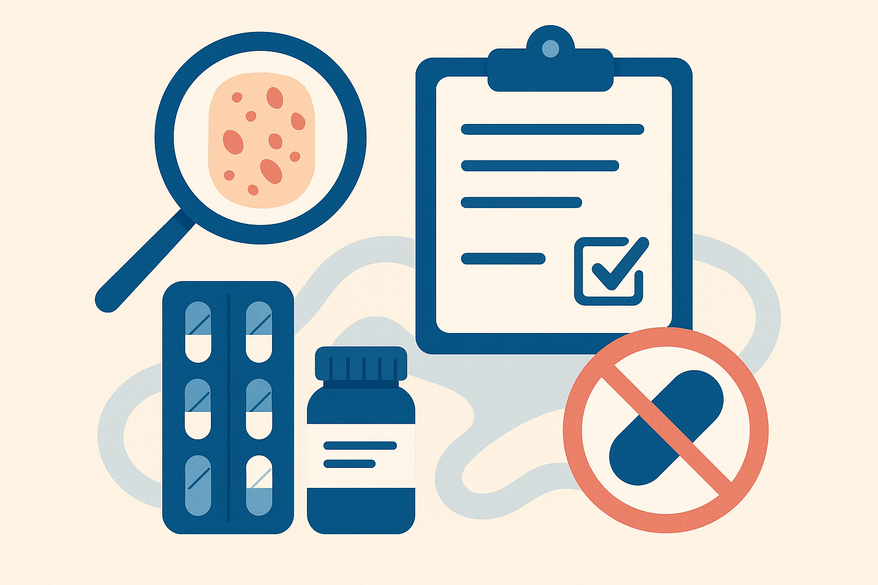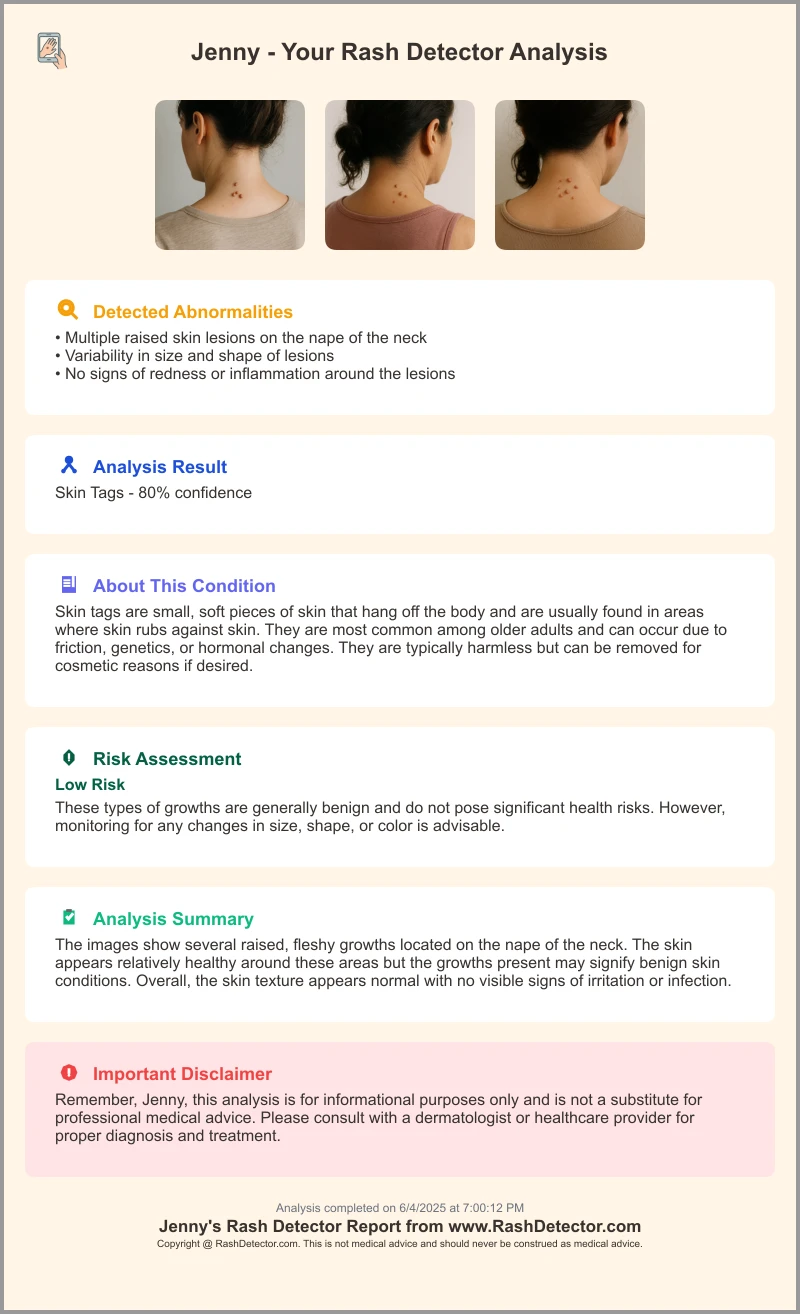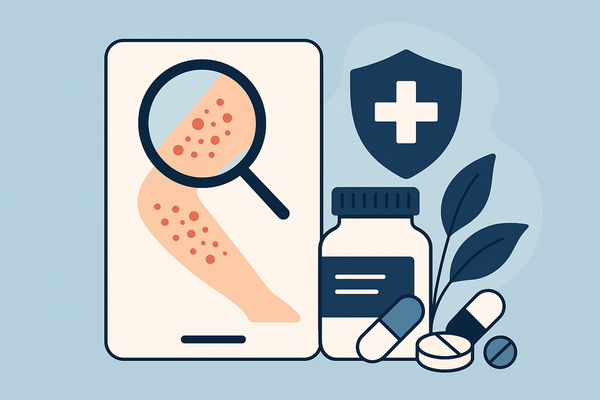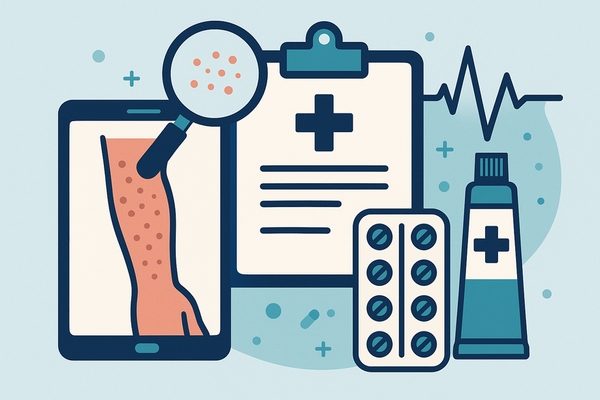Medication Rash Treatment: Comprehensive Guide to Identification, Management, and Prevention
Discover effective medication rash treatment with our comprehensive guide on identifying, managing, and preventing medication-induced rashes, ensuring patient safety.

Estimated reading time: 8 minutes
Key Takeaways
- Early Recognition Matters: Prompt identification of drug eruptions reduces risk of serious complications.
- Know the Culprits: Antibiotics, anticonvulsants, NSAIDs, and supplements commonly trigger rashes.
- Stepwise Management: From home remedies and OTC antihistamines to prescription steroids and specialist care.
- Prevent Recurrence: Maintain an accurate allergy history, consider patch testing, and use medical alerts.
- AI Can Help: Tools like Rash Detector offer supplemental insights for clinicians.
Table of Contents
- 1. What Is a Medication Rash?
- 2. Common Causes and Identification of Medication Rashes
- 3. Diagnosis and Initial Assessment
- 4. Management Strategies
- 5. Preventive Measures and Patient Guidance
- 6. Adding AI-Powered Support
- 7. Conclusion
- FAQ
1. What Is a Medication Rash?
Effective treatment begins with clear definition. A medication rash—also known as a drug eruption or hypersensitivity eruption—is a skin inflammation triggered by a pharmaceutical agent. Presentations may include red macules, raised papules, or fluid-filled vesicles, and can escalate to life-threatening syndromes if unrecognized. Early detection and classification (morbilliform, urticarial, fixed drug eruption) guide the safest next steps in therapy.
2. Common Causes and Identification of Medication Rashes
Common Medication Triggers
- Antibiotics: penicillins, cephalosporins, sulfonamides
- Anticonvulsants: carbamazepine, lamotrigine
- NSAIDs: ibuprofen, naproxen
- Barbiturates: phenobarbital
- Vitamins and supplements: niacin, herbal extracts
Symptoms and Characteristics
- Flat, measles-like maculopapular lesions
- Raised, itchy wheals (urticaria)
- Painful blisters on mucosal surfaces
- Dark red or violaceous patches indicating deeper involvement
- Combination of features requiring careful assessment
Differentiating from Other Skin Conditions
- Timeline: Onset days to weeks after drug initiation or change.
- Fixed Drug Eruption: Lesion reappears at the same site on re-exposure.
- No Infectious Signs: Isolated rash without fever or respiratory symptoms.
- Distribution: Often symmetric on the trunk and proximal limbs.
3. Diagnosis and Initial Assessment
When to Seek Medical Advice
- Extensive rash or blistering
- Mucous membrane involvement (mouth, eyes, genitals)
- Fever, joint pain, or swollen glands
- Spreading lesions or signs of anaphylaxis
Clinical Evaluation
- Detailed medication history: prescription, over-the-counter, supplements
- Full skin exam: lesion type, distribution, mucosal assessment
- Review of systemic symptoms: pruritus, pain, malaise
Potential Tests
- Supervised drug discontinuation and graded rechallenge
- Blood work: CBC with differential, liver and kidney panels
- Skin biopsy: histopathology for severe or atypical eruptions
4. Management Strategies
Immediate Actions
- Discontinue the suspected drug under medical guidance
- Document the reaction in your medical record
Home Remedies
- Cool compresses to soothe itching
- Fragrance-free cleansers to protect the skin barrier
- Unscented moisturizers for hydration
- Loose cotton clothing to reduce friction
- Avoid scratching to prevent secondary infection
Over-the-Counter (OTC) Interventions
- Oral antihistamines (cetirizine, loratadine, diphenhydramine)
- Low-potency topical corticosteroids (hydrocortisone 1%)
Prescription Treatments
- High-potency topical steroids (triamcinolone acetonide)
- Systemic corticosteroid taper (prednisone)
- Epinephrine auto-injector for anaphylaxis risk
- Hospitalization for severe reactions (Stevens-Johnson syndrome, DRESS)
Follow-Up and Monitoring
- Consult dermatology or allergy if rash persists beyond two weeks
- Watch for delayed hypersensitivity syndromes (DRESS, serum sickness)
- Update allergy records and inform all healthcare providers
5. Preventive Measures and Patient Guidance
Prevention Strategies
- Review allergy and reaction history at every visit
- Consider patch testing or graded rechallenge for high-risk patients
- Use medical alert bracelets or digital health cards for known allergies
Communication with Healthcare Providers
- Report all side effects promptly
- Keep an up-to-date medication list, including OTC products
- Share new rashes or systemic symptoms immediately
6. Adding AI-Powered Support
Supplement clinical assessment with AI skin analysis. For example, Rash Detector analyzes photos and generates a sample report for clinician review:

7. Conclusion
By combining prompt identification, structured management—from home care to specialist referral—and robust preventive measures, clinicians and patients can minimize the impact of medication-induced rashes. Always consult healthcare professionals for severe or persistent reactions, maintain clear allergy records, and leverage available tools to ensure safe, ongoing therapy.
FAQ
- Q: Can any medication cause a rash?
A: Yes. Nearly any pharmaceutical agent—from antibiotics to supplements—can trigger a cutaneous reaction, although some are more common than others. - Q: How quickly do medication rashes develop?
A: Onset varies: reactions may appear within hours, days, or even weeks after starting a drug, depending on individual sensitivity and drug half-life. - Q: What immediate steps should I take if I develop a rash?
A: Contact your healthcare provider before stopping any medication. Under guidance, discontinue the suspected drug, apply cool compresses, use antihistamines, and seek urgent care for severe symptoms. - Q: Are medication rashes dangerous?
A: Most rashes are mild and resolve with treatment. However, some can progress to life-threatening conditions like Stevens-Johnson syndrome or DRESS, making early recognition and treatment critical.





